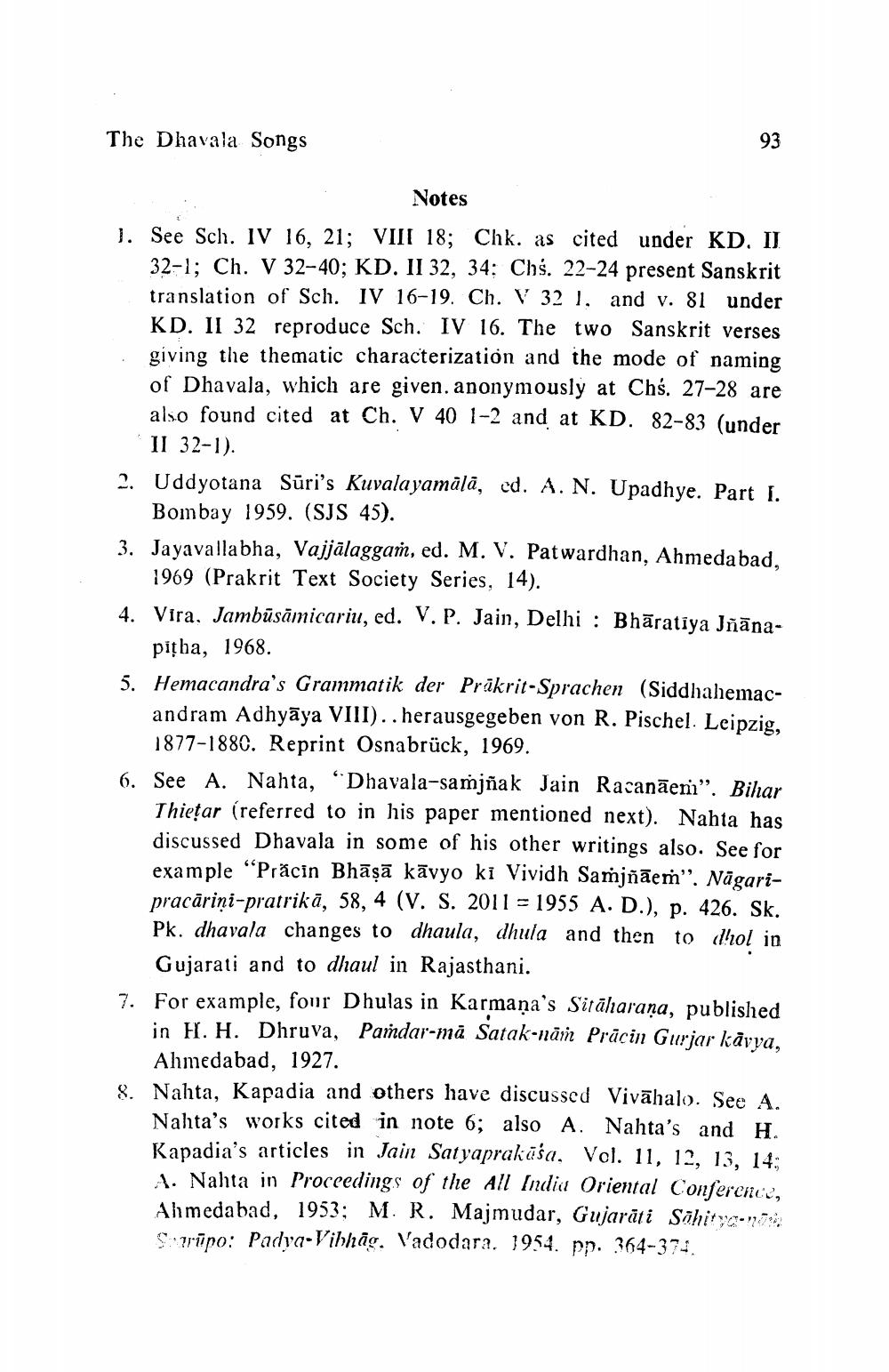________________
The Dhavala Songs
93
Notes 1. See Sch. IV 16, 21; VIII 18; Chk. as cited under KD, IJ
32-1; Ch. V 32-40; KD. II 32, 34: Chś. 22-24 present Sanskrit translation of Sch. IV 16-19. Ch. V 32 ], and y. 81 under KD. II 32 reproduce Sch. IV 16. The two Sanskrit verses giving the thematic characterization and the mode of naming of Dhavala, which are given. anonymously at Chś. 27-28 are also found cited at Ch. V 40 1-2 and at KD. 82-83 (under
II 32-1). 2. Uddyotana Sūri's Kuvalayamālā, ed. A. N. Upadhye. Part 1.
Bombay 1959. (SJS 45). 3. Jayavallabha, Vajjālaggam, ed. M. V. Patwardhan, Ahmedabad,
1969 (Prakrit Text Society Series, 14). 4. Vira. Jambūsāmicariu, ed. V. P. Jain, Delhi : Bhāratiya Jñāna
pitha, 1968. 5. Hemacandra's Grammatik der Prākrit-Sprachen (Siddhahemac
andram Adhyāya VIII).. herausgegeben von R. Pischel. Leipzig,
1877-1880. Reprint Osnabrück, 1969. 6. See A. Nahta, “Dhavala-samjñak Jain Racanāeni”. Bihar
Thietar (referred to in his paper mentioned next). Nahta has discussed Dhavala in some of his other writings also. See for example “Präcin Bhāṣā kāvyo ki Vividh Samjñāem”. Nāgaripracāriņi-pratrikā, 58, 4 (V. S. 2011 = 1955 A. D.), p. 426. Sk. Pk. dhavala changes to dhaula, dhula and then to dhol in
Gujarati and to dhaul in Rajasthani. 7. For example, four Dhulas in Karmaņa's Sitāharana, published
in F. H. Dhruva, Pamdar-mā Satak-nām Prūçin Gurjar kavya,
Ahmedabad, 1927. 8. Nahta, Kapadia and others have discussed Vivāhalo. See A.
Nahta's works cited in note 6; also A. Nahta's and H. Kapadia's articles in Jain Satyaprakāša, Vol. 11, 12, 13, 14; A. Nahta in Proceedings of the All India Oriental Conference, Ahmedabad, 1953; M. R. Majmudar, Gujarāti Sāhityceny Sarūpo: Padya-Vibhāg. Vadodara. 1954. pp. 364-374.




